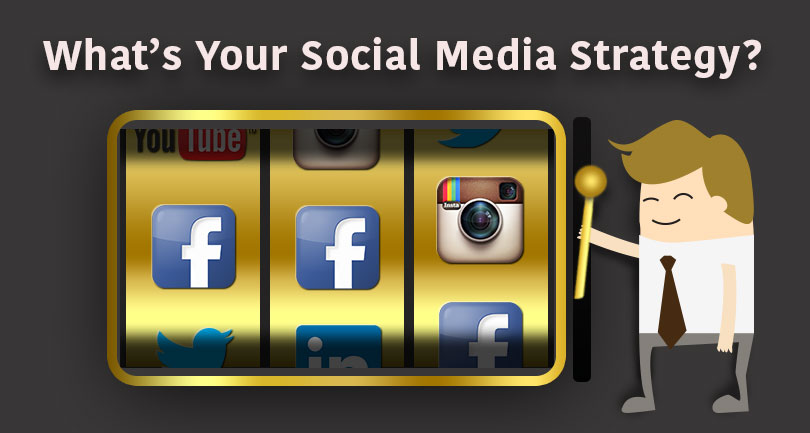
Before entering the vast world of social media, you need a strategy:
Social media has become a necessary tool for communication, and if your company isn’t participating, you’re definitely missing out. Consider the numbers: Facebook has 1.4 billion users. More than one billion people a month use YouTube, and about 288 million people use Twitter. Instagram counts more than 300 million users, and its average post engagement rate (3.31%) dwarfs Twitter’s (0.07%), making it valuable for any brand looking to build relationships.
These four social media sites may gather a lot of people every day, but that doesn’t mean a brand should utilize them all — or that they’re the only four social media sites your company should consider. What about Snapchat? 45% of users are 18 to 24 years old and by far the youngest user base of any other platform. What about Tumblr and Pinterest, both experiencing the greatest growth in active users (+120% for Tumblr and +111% for Pinterest)?
Having an account is the first step, but social media is called social for a reason. People won’t follow you on Twitter unless you’re interesting, provide content, and engage with your community. Consistency takes time. Therefore, you need a strategy.
What are your objectives?
What does your brand want out of social media? Do you want to increase your daily traffic to your website? Or are your accounts meant to increase brand awareness? You can use social media to gather fans and build a community around your company, garnering a presence in your users’ lives. Your social media strategy will be stronger if your objectives are clear and realistic and your team is on the same page.
Watch what top brands are doing with social media to get ideas. How do they lay out their profiles? Their Twitter bios may indicate what the brand’s goal is with social media. For example, Starbucks rarely uses links in their Facebook posts or tweets. Rather, Starbucks posts lots of pictures with its product in the center. These posts encourage customers to discover the world of Starbucks rather than to visit the Starbucks website.
What are your resources?
Content: Before you get started on social media, you have to know what type of content you can provide. Today, video is king. It has by far the most reach of any type of content on Facebook. Instagram is the perfect place for pictures of events or people using your product. However, boring, repeated content is a huge mistake. Your accounts will be more engaging — and have more followers — if you adapt the content you post to the platform and provide platform exclusive content. Why would your users follow you on Instagram if you just push everything you post on Instagram to Facebook?
Time: Building and interacting with a community is time consuming, and an online community requires interaction every single day (including the weekend and holidays). If you’re not posting over the 4th of July weekend, you’re missing out on interacting with users who are exploring social media during their free time. Additionally, designing content, adapting your message to the platform takes skill. And then there’s interaction! When you like comments and answer questions, you keep your followers reading and increase post engagement. In short, more
People Power: How many people will handle your social media accounts? How much do they know about the platform? For example, Twitter may be difficult to understand, even for an employee who is particularly skilled at Facebook. Not every user knows that a tweet beginning with a mention will only show up in the timelines of people following both the sender and the addressee. Also, hash tag strategy varies across every single platform.
What KPI are you using?
In short, your social media posts are near worthless if you can’t monitor them.
Pick the most relevant monitor for your objectives. For example, video views, post reach, and number of mentions/shares may indicate how well your message has diffused, helping your brand awareness. Pay attention to the analytics sections of your social media platforms! For example, Twitter provides any user notifications and interaction data. Regularly evaluate how well your posts are working and make adjustments when necessary.
Social media is always changing, so your strategy has to be always changing, too. Platforms roll out new features and researchers discover new follower habits. Staying informed is absolutely necessary — or else your competitors will get the advantage.
Nicolas Le Breton
@LBretonNicolas
Nicolas.lebreton@essca.eu





